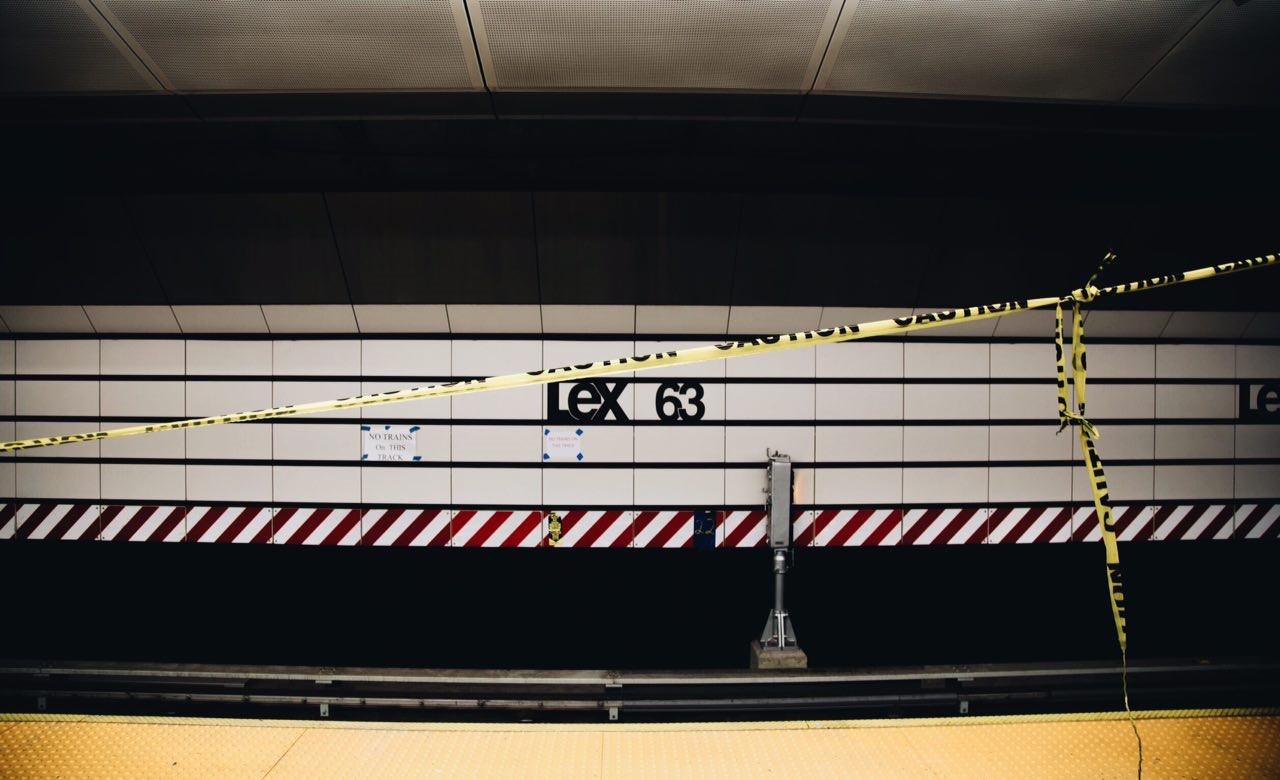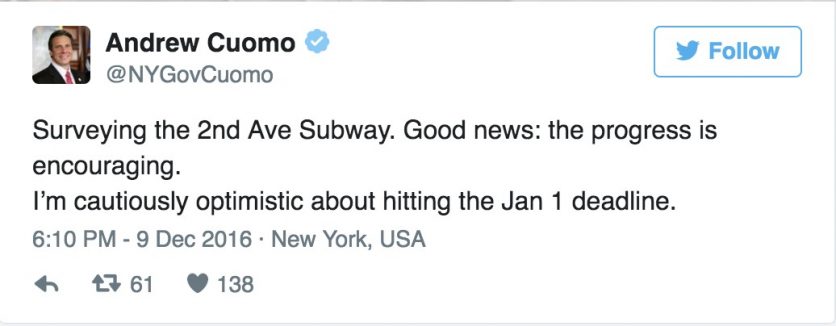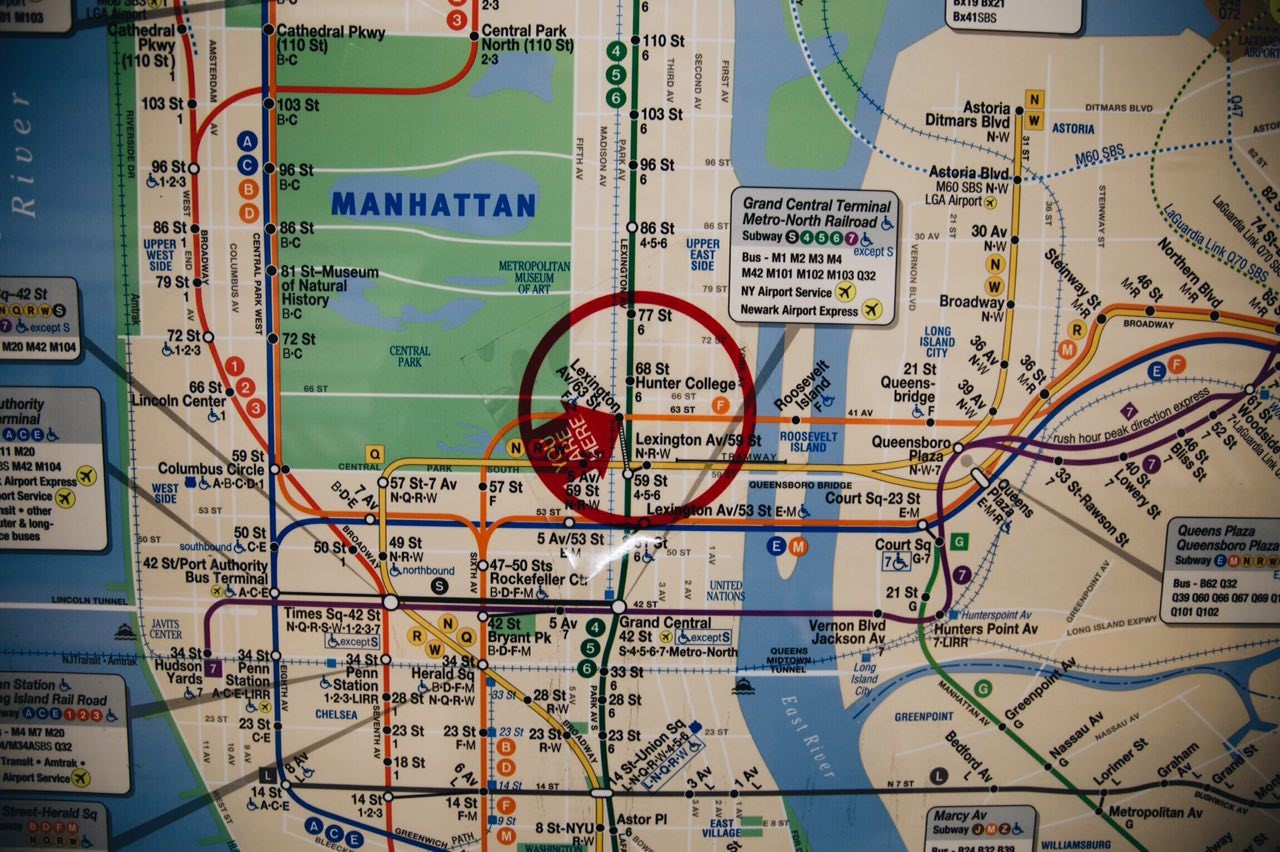 Contributed by Joy Anne Andres, Amber Sanchez, and Leo Sanchez
Contributed by Joy Anne Andres, Amber Sanchez, and Leo Sanchez
The Metropolitan Transit Authority workers of New York City have been working hard lately on the long awaited subway on Second Avenue. The expansion was first became an idea in the 1920s and was given an estimate cost of $86 million, but because of the Great Depression, World War II, and other financial problems, the timing in constructing was just not right. This subway line will be the first major extension to the city’s dependant transit system in more than five decades.

New York Governor Andrew Cuomo visited and checked out the line’s progress this past weekend. He tweeted and updated anxious New Yorkers that he is “cautiously optimistic” for the January 1st deadline. After installing the needed escalators and elevators, workers themselves also have an expected due date of December 23rd to have everything tested.
Upper East Siders are especially eager for the Second Avenue subway as it will help tremendously in decongesting the Lexington Avenue-63rd Street station that transports 1.3 million riders on the 4, 5, and 6 trains every day. The T train line will still have a connection to the major station and will surely allow a smoother flow of crowds through the Lexington Avenue line. It will span 8.5 miles from the Financial District’s Hanover Square to Harlem’s 125th Street.

In addition to that, the Manhattan bound Q line’s last stop will no longer be at 57th Street-7th Avenue. Instead, another seven stops will be added to the line, running towards the same Harlem stop as the T at 125th Street.
Luckily, the stations will be climate controlled and will be much cooler. Wi-Fi will also be provided, as well as wheelchair accessibility with the help of elevators and escalators.
The look of the stations will have their own touch of uniqueness as it will be paneled with porcelain and will feel more spacious as it will not have columns.
This project has four phases of its construction. Nearly $4.5 billion was spent on the first phase and is hoped to be complete soon enough. This phase includes the opportunity for commuters to travel all the way up to 96th street on the Q train. The second phase will complete the path to 125th street while the third and fourth phase will focus on completing the lower Manhattan portion of the T train plan.







